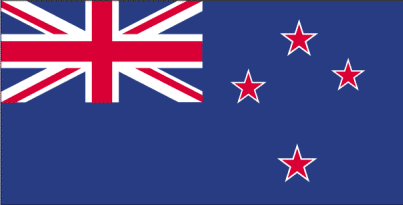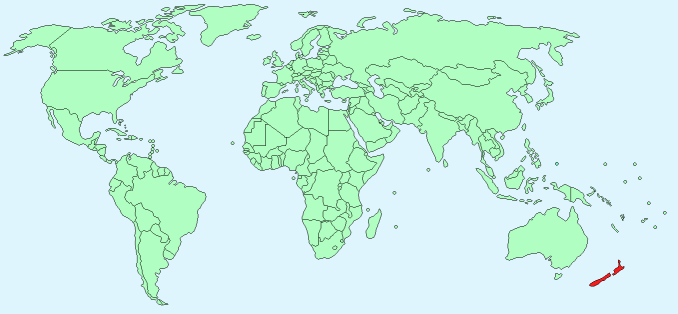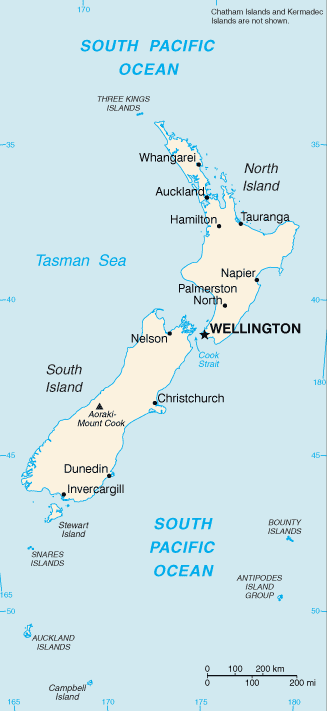New Zealand


Continent – Australasia Oceania
Region – Australasia, Oceania
Territories – Cook Islands, Niue
Size – 267,710 km²
Geography – Mountainous with coastal plains
Language – English, Maori
Religion – Christian 44.3%, None 38.5%, other 17.3%
Monetary Unit – New Zealand dollar
Natural Resources – natural gas, iron ore, sand, coal, timber, hydropower, gold, limestone
Agriculture – dairy products, sheep, beef, poultry, fruit, vegetables, wine, seafood, wheat and barley
Industry – agriculture, forestry, fishing, logs and wood articles, manufacturing, mining, construction, financial services, real estate services, tourism

Neighbouring Countries – None
Population – 4,438,393 (2015)
Population Growth Rate – 0.82%
Average Life Expectancy – 81.05
Capital City – Wellington (population 380,000)
Largest City – Auckland (population 1,329,000)
Highest Mountain – Aoraki-Mount Cook (3,754 m)
Longest River – Waikato River (425 km)
Climate – mostly temperate, sub-tropical in North. South – warm summers 13°C to 22°C, cool winters 1°C to 5°C, North – warm summers 12°C to 22°C, cool winters 3°C to 12°C
Yearly Rainfall – 110 cm approx
Plant Life – rimu, totara, beech, giant kauri, ferns, mosses, lichens, pohutukawa tree, conifers, funghi
Animal Life – no native animals other than 2 bat species
Bird Life – parrot, takahe, kiwi
Aquatic Life – eels, water snails, sandflies, crayfish
Harvard Reference for this page:
Heather Y Wheeler. (2015). New Zealand. Available: https://www.naturalhistoryonthenet.com/Facts_Figures/Country_Facts/new_zealand.htm. Last accessed Tuesday, July 19, 2016
Facts and Figures Pages
